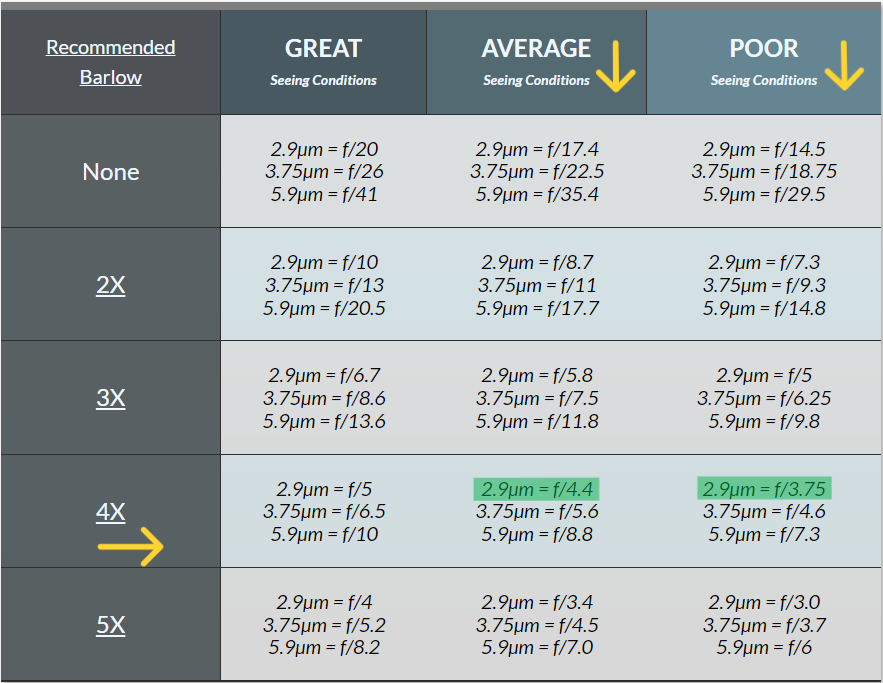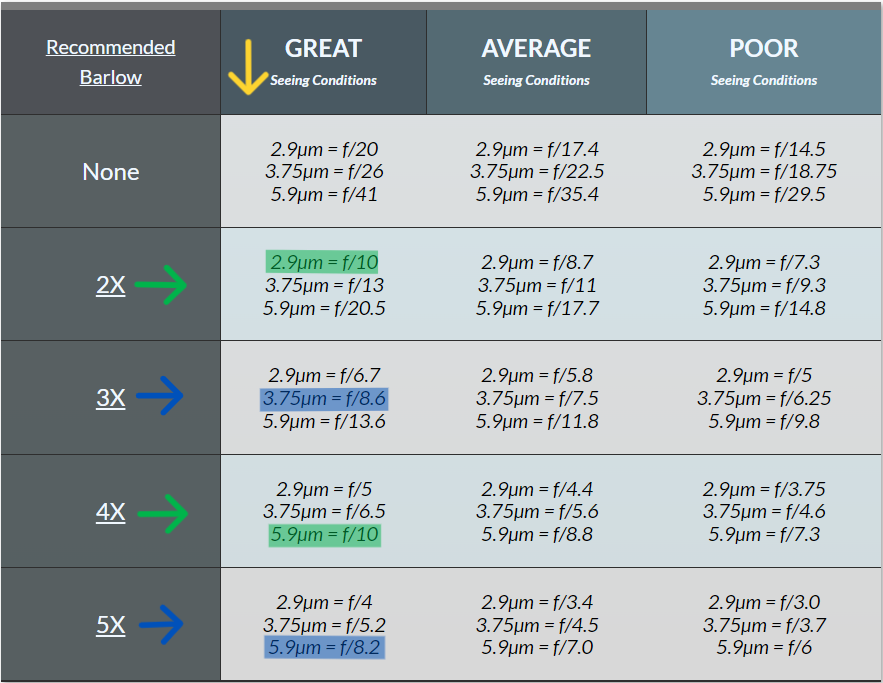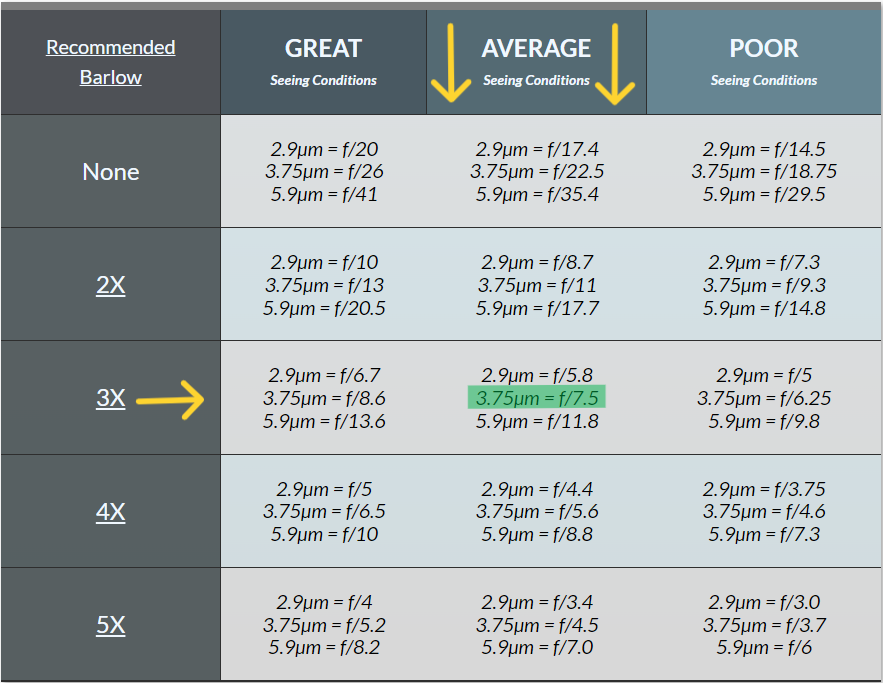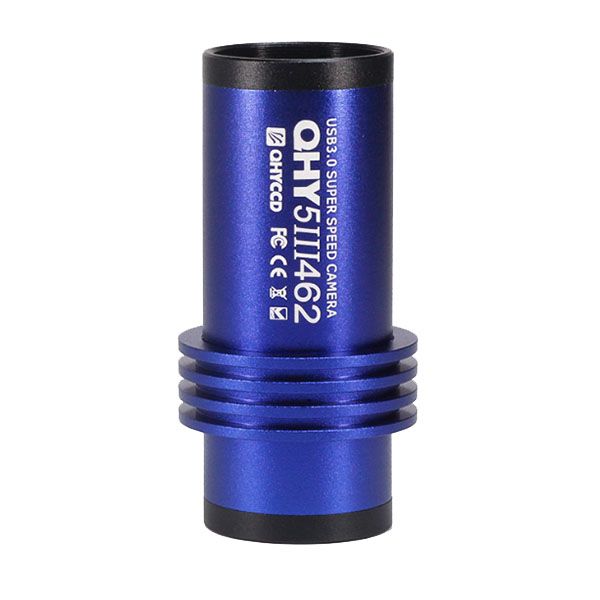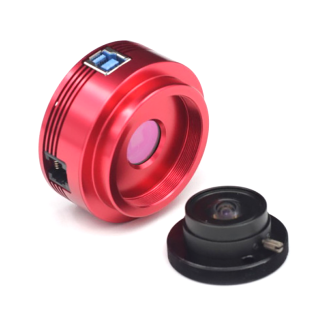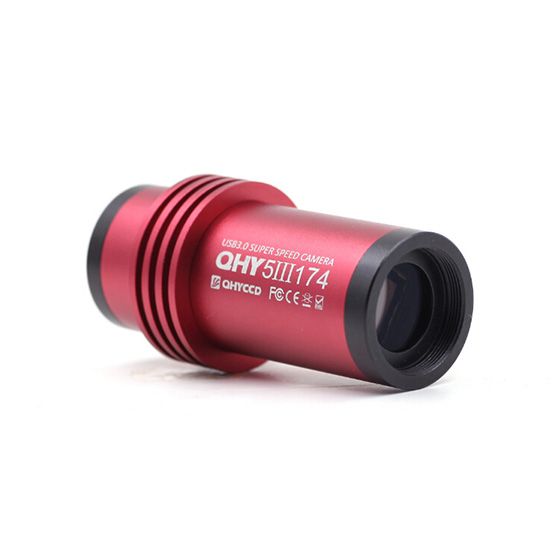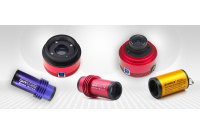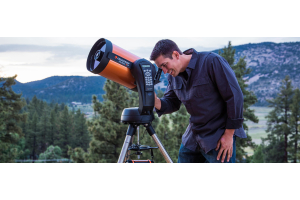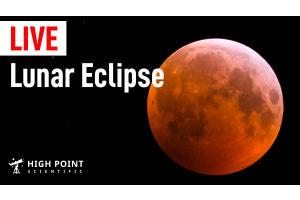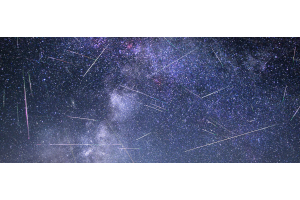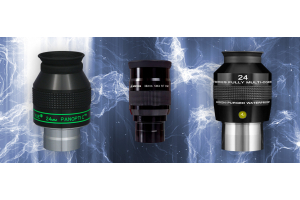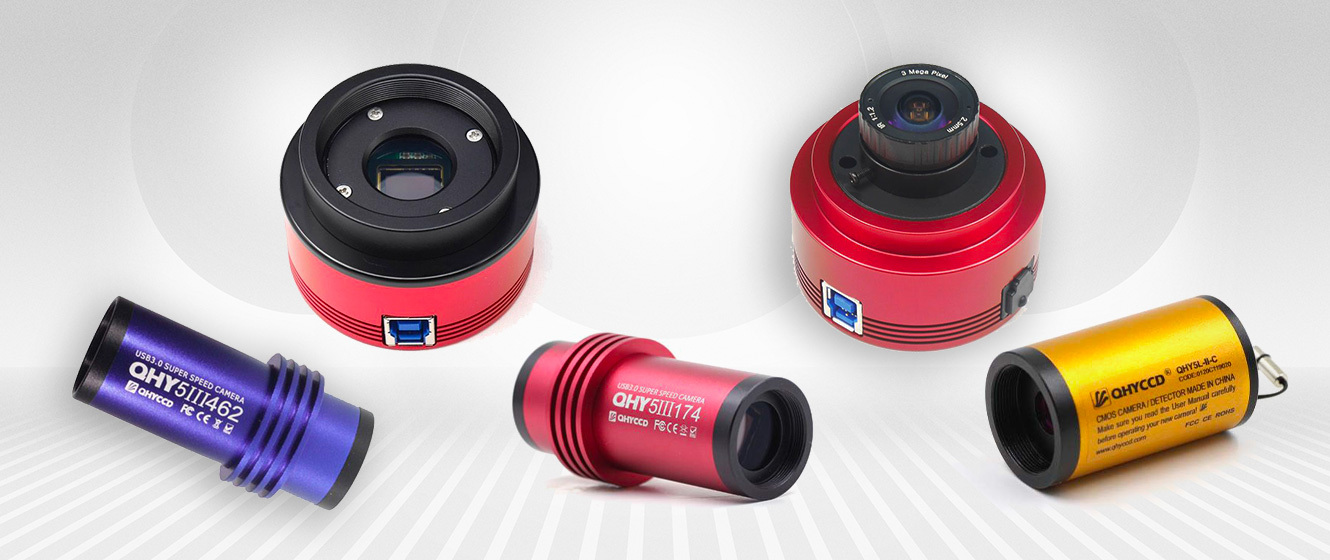
There is a wide variety of planetary cameras to choose from, and each has slightly different specifications that include pixel size, pixel count, sensor size, and more. There is no one planetary camera that is the best for all circumstances, but you can narrow your search by choosing a planetary camera that pairs best with the equipment you already have and the seeing conditions you live in ― this is what will get you the best results from your location.
Apart from your local seeing conditions, many other factors, such as size of aperture, quality of your optics, experience, collimation, focus, and temperature acclimation of your scope play a very important role in final image quality. As you become more experienced in planetary imaging, you will get a sense of what equipment you need to upgrade or improve upon. You may also learn that your collimation wasn't as precise as you thought, or that your focus is a bit off. This will all come with more experience and practice, but the information below will help start you off with the correct equipment given your local seeing conditions. The Clear Sky Chart is a great site to help determine your seeing conditions.
When choosing a planetary camera, consider this guiding rule: Pixel Size (µm) X 6 = recommended focal ratio for planetary imaging.
- Multiply pixel size by 6 if you normally have good seeing conditions.
- Multiple pixel size by 7 if seeing conditions are better than average.
- Multiply pixel size by 5 if seeing conditions are below average.
Below, you'll find additional equations to help determine which Barlow lens, camera, or scope may suit your local seeing conditions best. Fill in the equation with your equipment and solve for the missing piece!
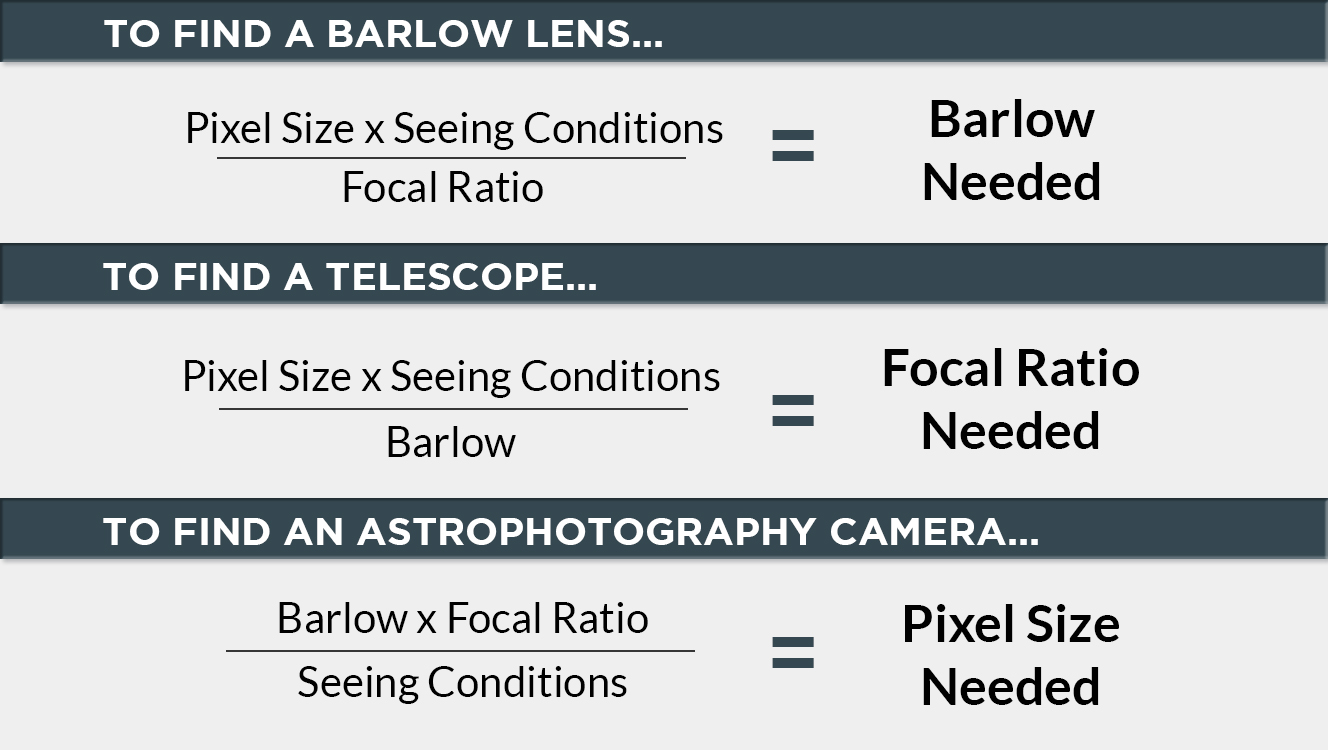
Please note: You might need to round your answers and you must have (2) out of the (3) components to solve the equation
Planetary Camera, Barlow & Focal Ratio Table
The table below can be used as a helpful aid. Begin by finding your seeing conditions, then either use the focal multiplier of your Barlow lens, pixel size of your camera, or focal ratio to determine if your equipment is well paired. Using the table works best when you have at least two out of the three of the following components: Focal ratio of your scope, One of our recommended planetary cameras, A Barlow lens.
| Recommended Barlow |
GREAT Seeing Conditions |
AVERAGE Seeing Conditions |
POOR Seeing Conditions |
|---|---|---|---|
| None |
2.9µm = f/20 3.75µm = f/26 5.9µm = f/41 |
2.9µm = f/17.4 3.75µm = f/22.5 5.9µm = f/35.4 |
2.9µm = f/14.5 3.75µm = f/18.75 5.9µm = f/29.5 |
| 2X |
2.9µm = f/10 3.75µm = f/13 5.9µm = f/20.5 |
2.9µm = f/8.7 3.75µm = f/11 5.9µm = f/17.7 |
2.9µm = f/7.3 3.75µm = f/9.3 5.9µm = f/14.8 |
| 3X |
2.9µm = f/6.7 3.75µm = f/8.6 5.9µm = f/13.6 |
2.9µm = f/5.8 3.75µm = f/7.5 5.9µm = f/11.8 |
2.9µm = f/5 3.75µm = f/6.25 5.9µm = f/9.8 |
| 4X |
2.9µm = f/5 3.75µm = f/6.5 5.9µm = f/10 |
2.9µm = f/4.4 3.75µm = f/5.6 5.9µm = f/8.8 |
2.9µm = f/3.75 3.75µm = f/4.6 5.9µm = f/7.3 |
| 5X |
2.9µm = f/4 3.75µm = f/5.2 5.9µm = f/8.2 |
2.9µm = f/3.4 3.75µm = f/4.5 5.9µm = f/7.0 |
2.9µm = f/3.0 3.75µm = f/3.7 5.9µm = f/6 |
Use the table to find which Barlow/focal ratio/camera combination you need under your local seeing conditions. In the following section, you'll find three examples that demonstrate how to navigate the table!
How To Navigate the Table
Example 1
You are looking for a planetary camera. You have a f/3.9 Newtonian and a 4x Barlow. You live under average and poor seeing conditions.
Start with your seeing conditions. Look in the “Poor” and “Average” seeing conditions column. Because you have a 4x Barlow you want to look at the boxes that intersect “4x Barlow” and “Poor/Average Seeing Conditions.” These boxes state that for a f/4.4 or f/3.75 scope, the ASI290 is going to be the best option!
Example 2
You are looking for a Barlow lens and a camera. You live under great seeing conditions and have an 8” SCT at f/10.
To find out what camera/Barlow combination would be best, start looking under the “Great Seeing Conditions” column. Look under all of the selections that offer an f/10 or close scope. You will find that a 4x Barlow and a camera with 5.9µm pixels or a 2x Barlow and a camera with 2.9µm pixels is the best option as these combinations pair perfectly with an f/10 scope!
Here are your other options.
- 3x Barlow / 3.75µm camera
- 5x Barlow / 5.9µm camera
Example 3
You are looking for a new scope. You already have one of our recommended cameras, the classic QHY5L-II with 3.75µm pixels. You also have a 3x Barlow given to you by a friend. You conclude that you have average seeing conditions.
Look at the box that intersects “Average Seeing Conditions” and 3x Barlow. This box will show you which camera / focal ratio combination is the best. From this box you can conclude that the best scope for you would be a scope with a focal ratio close to f/7.5!
Recommend Cameras
The cameras in the chart below have proven time and time again to produce some spectacular planetary and lunar images! They offer a wide range of pixels sizes that will pair with many different scope and Barlow combinations. These are some of the more popular planetary cameras on the market today and through this article, we wanted to guide you towards the one best suited for your personal imaging needs! The best planetary imaging camera for you is the one that pairs best with your seeing conditions and equipment.
| Recommended Cameras | SMALL PIXEL 2.9µm |
MEDIUM PIXEL 3.75µm |
LARGE PIXEL 5.9µm |
|---|---|---|---|
|
QHY5III462
ZWO ASI462MM ZWO ASI585MC ZWO ASI662MC ZWO ASI676MC ZWO-ASI678MC |
ZWO ASI120MM QHY533-M QHY550M ZWO ASI533MC-P |
ZWO ASI482 ZWO ASI174 QHY 5III174 |
Small Pixel Cameras (2.9 microns)
The Sony IMX290/IMX291 in the ZWO ASI290 and QHY5III462 are fantastic high resolution planetary cameras offering upwards of 170 frames per second! The cameras have a peak quantum efficiency of 80% and provide an improvement in autoguiding accuracy over larger pixel planetary cameras.
Medium Pixel Cameras (3.75 microns)
These cameras under this category (ZWO ASI120, QHY5L-II) mix great resolution with sensitivity! These cameras are classic options when taking the dive into planetary imaging, autoguiding through longer focal length guide scopes or when using an off-axis guider.
The ASI224 and ASI385 are upgrades of the two planetary cameras listed directly above offering a considerable increase in sensitivity rendering them phenomenal choices for planetary imaging. As a result of the sensitivity, these two cameras are also highly sought after for Electronically Assisted Astronomy (EAA).
Large Pixel Cameras (5.9 microns)
These cameras are great options for longer focal length scopes or scopes used with high magnification Barlows! They offer a peak QE of 77%, a maximum frame rate of 164 frames per second and are optimal for off axis guiding!

Questions? Contact Us!
Still have questions or need help choosing the right astrophotography equipment? Contact our gear experts and shop confidently knowing we have over 115 years of astrophotography experience between us!
Click the arrow above to see MLA, APA, and Chicago Manual of Style citations.
MLA:
High Point Scientific Team. "Choosing the Best Planetary Camera," AstronomyHub, High Point Scientific, 24 Sep. 2024, https://www.highpointscientific.com/astronomy-hub/post/choosing-the-best-planetary-camera.
APA:
High Point Scientific Team. (2024, September 24). Choosing the best planetary camera. High Point Scientific. https://www.highpointscientific.com/astronomy-hub/post/choosing-the-best-planetary-camera
Chicago Manual of Style:
Bibliography:
High Point Scientific Team. "Choosing the Best Planetary Camera," AstronomyHub (blog), High Point Scientific, September 24, 2024. https://www.highpointscientific.com/astronomy-hub/post/choosing-the-best-planetary-camera.
Footnote:
High Point Scientific Team, "Choosing the Best Planetary Camera," AstronomyHub, High Point Scientific, September 24, 2024, https://www.highpointscientific.com/astronomy-hub/post/choosing-the-best-planetary-camera.
This Article was Last Updated on 9/24/2024

